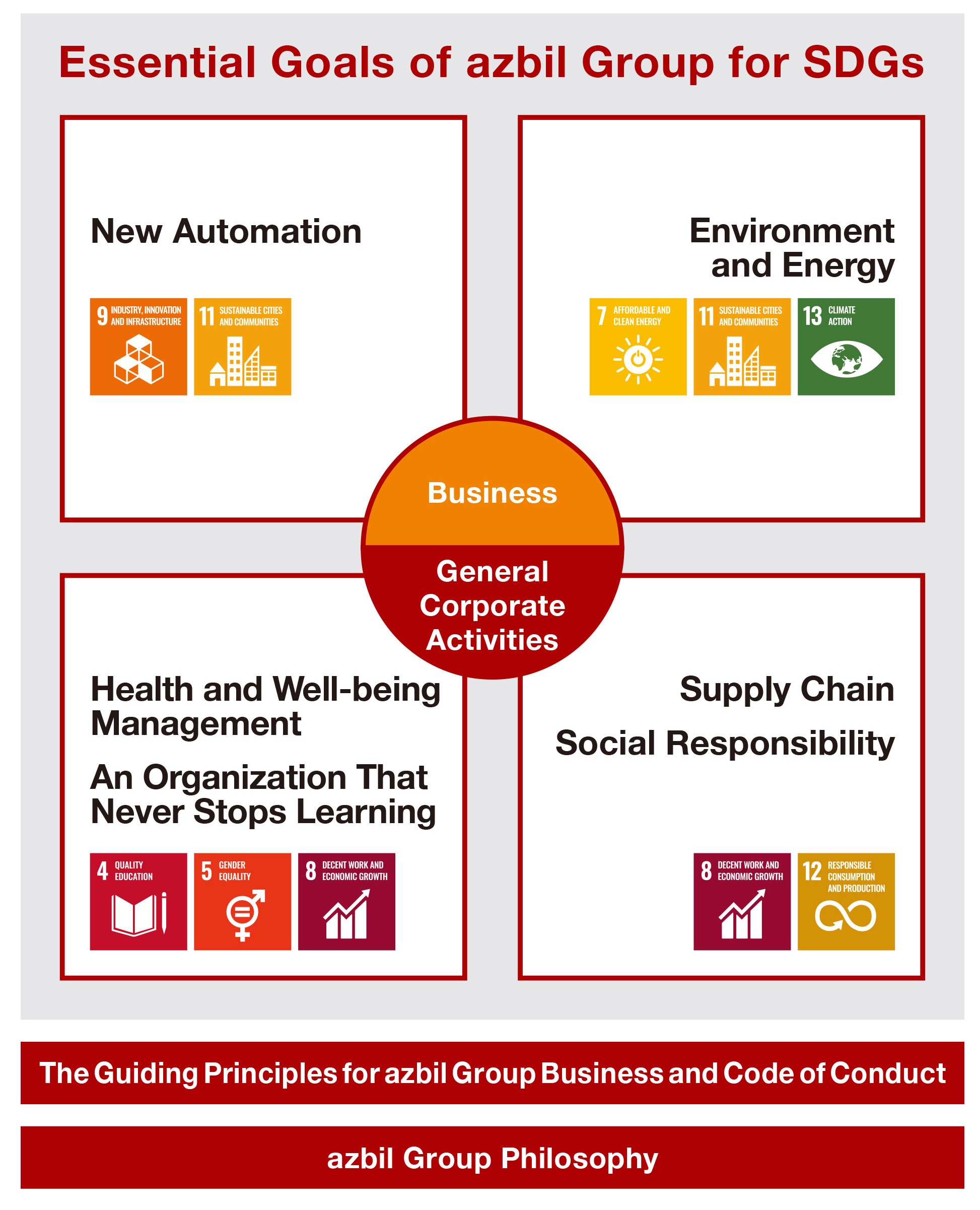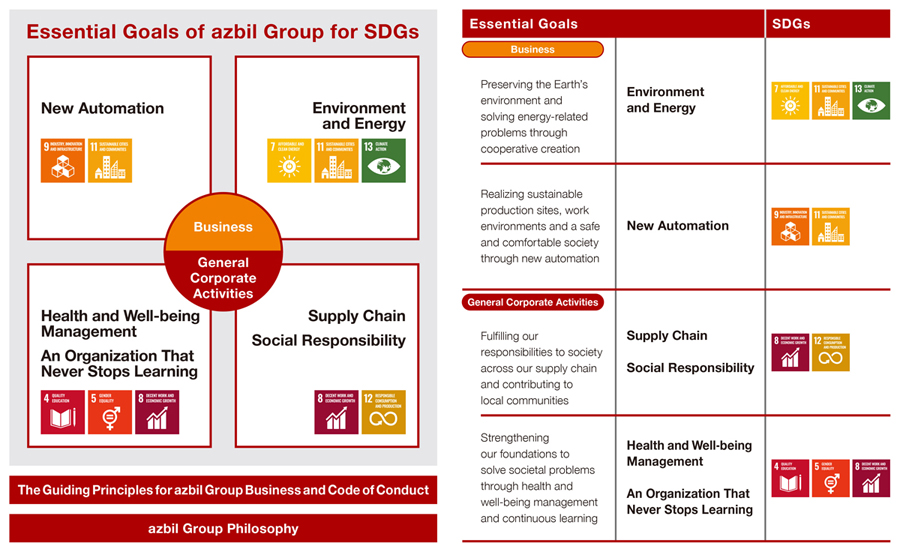Azbil Sets Two Quantitative Indicators for Its “New Automation” SDG-Related Goals
Azbil Corporation (Tokyo Stock Exchange code 6845) announced that it set two quantitative indicators to promote New Automation as part of its business, in keeping with the azbil Group’s SDG-related goals.
The azbil Group, to enhance its sustainability management for the purpose of achieving a sustainable society, has chosen materiality as the criterion for selecting 10 priority issues to be addressed over the long term.
Among the 10 selected issues, the company has set its own SDG-related goals, which fall into four categories, and which are positioned as important guideposts for sustainability policy.

Through these efforts toward achieving the SDGs, the azbil Group aims to create unique value both in business and in human resource development and growth, and also to make contributions leading “in series” to a sustainable society. To ensure progress in these efforts, specific indicators are set for each goal. They are reviewed every year, and new indicators are added.
One of the four areas of SDG-related goals, New Automation, aims to provide a sustainable production site and workplace environment for customers, along with greater safety, comfort, and fulfillment. Through advancedmeasurement, a data-driven approach, and autonomy in production spaces, office spaces (e.g., buildings), and living spaces, the aim is to solve emerging issues confronting society and create new added value. We have set the following new quantitative indicators for New Automation.
- We will achieve a state of resilience to changes in the business environment at 8,000 business sites by 2030*1
- We will provide environments that support stress-free and diverse work styles to 6 million people by 2030*2
In today’s rapidly changing business environment, management, operations, and environmental measures that are data-based are required. New Automation can achieve increased sustainability for customers’ production sites and workplace environments with quick and high-quality responses to problems that impede sustainability and cannot be solved by conventional automation alone (equipment failure, etc.) and societal issues such as the declining working population and the need for carbon neutrality.
Specifically, the main products and services are as follows:
- Advanced measurement devices featuring MEMS technology
- Cloud services for office buildings to optimize facility operations and foster wellness
- LP gas remote meter reading cloud system and delivery efficiency service
- Valve diagnosis service by analyzing various operating data
- Autonomous systems?such as an online anomaly prediction/detection system based on AI and historical data.
Furthermore, by strengthening New Automation area by expanding partnerships with companies and various research institutes active in various fields, the company is expanding its business and contributing to the achievement of the SDGs by the wider distribution of its technology and knowledge in society.
The azbil Group’s target SDGs and New Automation

New Automation
Target
So that customers can benefit from sustainable production sites and workplace environments? as well as greater safety, comfort, and fulfillment?we will solve occasional issues as required by society and create added value through advanced measurement, a data-driven approach, and autonomy in production spaces, office spaces (buildings), and living spaces.
Quantitative indicators
- We will achieve a state of resilience to changes in the business environment at 8,000 business sites by 2030
- We will provide environments that support stress-free and diverse work styles to 6 million people by 2030
Areas of Contribution
- Realizing automation that is resilient to changes in the business environment
Prediction/diagnosis of the effects of changes in the internal environment (equipment malfunction, raw material quality, etc.)
Prediction/diagnosis of the impact of changes in the external environment (natural disasters, social conditions, etc.); autonomous decision-making and control - Realizing a stress-free work environment
Reduction of work errors and unscheduled work through data-based work support
Creation of a comfortable and energy-efficient environment that enhancers labor productivity - Realizing an environment conducive to diverse work styles
Creation of optimal working environments suited to different times and locaitons.
Creation of work environments that are neutral (re. age, gender, skills, etc.)
*1 As of April 2022, the number of sites in operation was 530; by 2030 we are aiming to increase this number by 15 times to 8,000.
*2 As of April 2022, the number of people was 0.6 million; by 2030 we are aiming to increase this number by 10 times to 6 million.
* Posted information is accurate as of the date of announcement.
